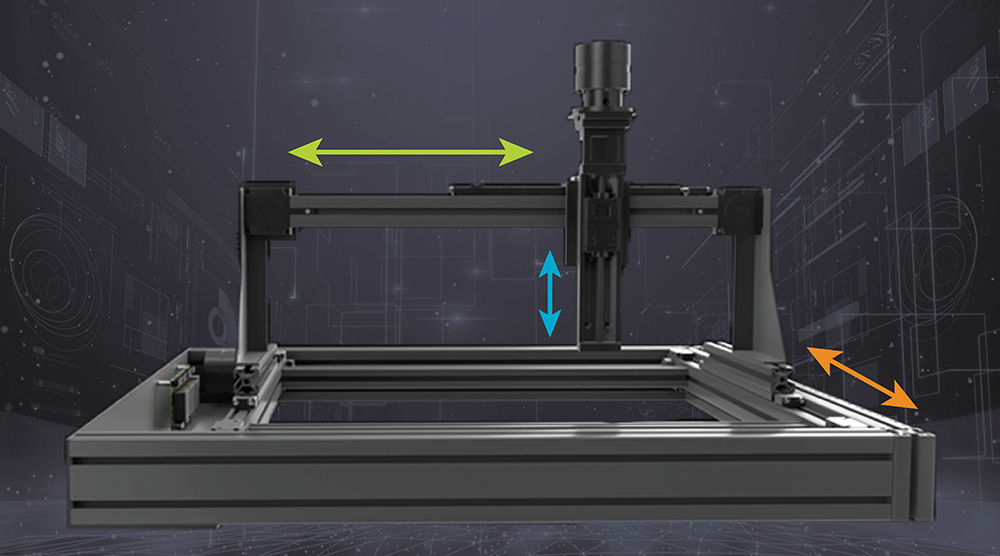Gantries are mechanical devices that move orthogonally in three dimensions. They form the basis of a wide variety of systems that process liquids, biological samples, industrial materials, and print, cut, or otherwise operate on materials. Gantry Control involves the synchronized control of motion functions such as point-to-point transfers, path following, pipette/cuvette management, and pick and place operation.
In this Motion Application:
- Explore Design Considerations & Techniques
Operating gantries and the end effectors that they carry places special demands on motion controllers. Trajectory profiles must be designed to maximize throughput while minimizing the vibration injected into the mechanism. Furthermore, servo control techniques must operate safely over a wide range of payload weights and movement speeds. Most gantries use rotary motors with belts or pulleys to drive the mechanism, but linear Brushless DC motors are increasingly also being used. - Examine Application Architecture
The diagram below shows a typical (although simplified) control architecture for an embedded gantry controller. A system host sends high level commands such as “deliver the object to XYZ station #7”. The controller, which has three axes of positioning motion control, receives these high level commands and parses out the low level motion sequences to each axis needed to complete the overall function. - View Motion Control Solutions
Since 1992 Performance Motion Devices products have been used to control wide range of gantry-based systems including blood analyzers, DNA sequencers, 3-D printers, packing equipment, cutters, and much more. Our Magellan Motion Control ICs, ION Drives, and Prodigy Motion Control Boards all provide the vital motion control technologies needed to successfully build your gantry controller application.
Click here to see more.


